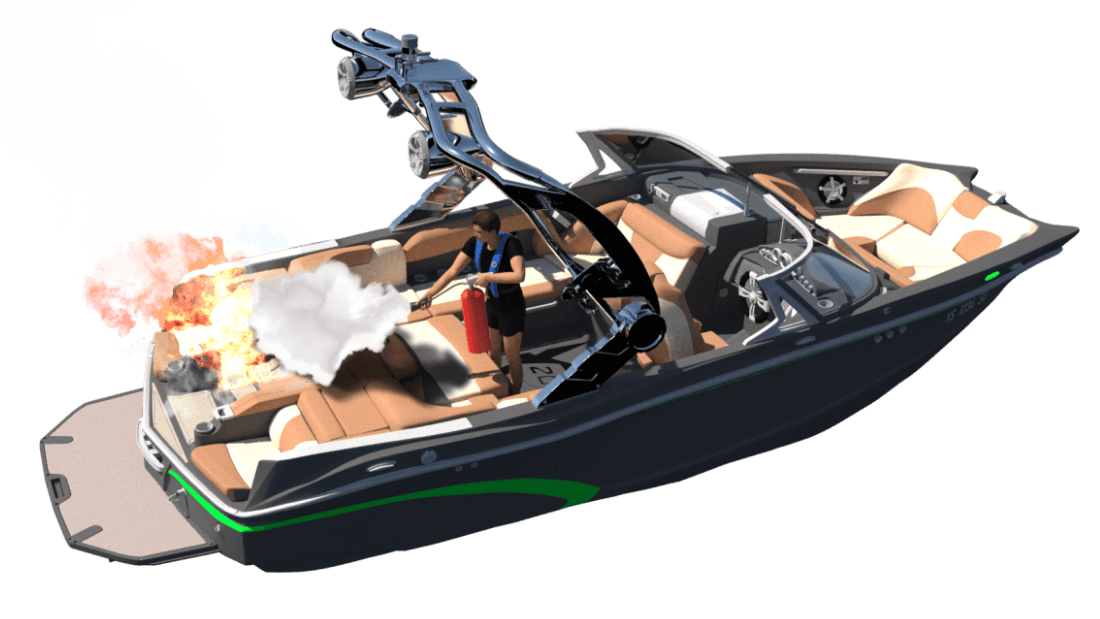Fires on board
An onboard fire is a serious event. If the fire cannot be controlled where does one go except in the water? The fire triangle consists of fuel, oxygen and heat. All three must be present to start a fire and the removal of any single one can extinguish a fire.
Fuels such as gasoline and propane can be very dangerous if precautions are not taken. The fumes of these fuels are heavier than air and tend to collect in the bilge and other lower areas of the boat. Because they naturally are surrounded by oxygen all that is necessary to start a fire is heat. This could come from something as simple as a spark from an ignition component. All you did was turn the key to start the engine and boom. Most boat explosions and fires occur during or right after fueling.
- You should read and understand the instructions on your fire extinguisher(s). If a fire starts, you should be prepared and not hesitate.
- Grab the fire extinguisher, activate it, and direct it at the base of the flames using short bursts and sweeping it from side to side.
- If underway and a fire starts, stop the boat and position it in such a manner that the fire is downwind. Order everyone to put on lifejackets. If possible try to turn off the fuel source to the fire. Grab the extinguishers and control the fire.
- Check the gauge on your fire extinguisher regularly to ensure that it is charged properly. Also, check the seals to make sure nothing has been tampered with. Remember, you should have the extinguisher recharged after you have used it.
- Before each voyage, turn your dry chemical extinguisher upside down and give it a few taps with a rubber mallet. This will loosen the powder inside the extinguisher if it has caked up. Loose powder is much more effective for putting out a fire.
